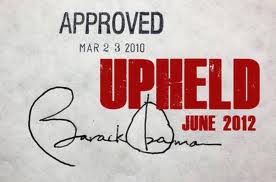We know it would have done a lot of good, at a very reasonable cost. Turns out that cost was even less than what we had been told.
News reports and state officials have commonly stated that expanding the Medicaid program in this fashion would cost the state about $15 billion over 10 years. Except, that figure, provided by the state Health and Human Services Commission, is actually an estimated total cost for all aspects of the Affordable Care Act, many of which the state is going to have to pay for even though state leaders have remained steadfastly opposed to almost all aspects of the law.
“What?!?,” you say?
In a presentation given to lawmakers in March 2013, state Health and Human Services Executive Commissioner Kyle Janek estimated that because of the publicity and outreach involved with the Affordable Care Act, more people who are eligible for Medicaid but not currently part of the program would likely enroll. The estimated price tag? About $6 billion over 10 years, or approximately 40 percent of the total Affordable Care Act implementation cost.
According to that presentation, the estimated cost for expanding Medicaid eligibility to all adults who make less than the 138 percent of the poverty level was about $8.8 billion over 10 years. However, the Legislative Budget Board, the Legislature’s budget arm, came up with a far lower cost estimate of about $4 billion over 10 years. The differences can be attributed to two factors, HHSC spokeswoman Stephanie Goodman said. First, HHSC projects that more people will join the Medicaid program than the LBB does; and second, HHSC projected it would cost more to provide the coverage than the LBB does.
Secondly, assume that $1.5 billion figure is correct and that adding it to the state budget would cause taxes to skyrocket and the state’s economy to crumble. However, it begs the question why that hasn’t already happened. Taxpayers in the five major urban counties in Texas — Harris (Houston), Dallas, Tarrant (Fort Worth), Bexar (San Antonio) and Travis (Austin) — already shell out more than $1.5 billion a year in hospital district taxes to provide care and facilities for their largely indigent populations. A study commissioned by Methodist Healthcare Ministries and Texas Impact estimated total local government spending on providing health care at roughly $2.5 billion a year.
Thirdly, expanding Medicaid would produce additional revenue for hospital districts, potentially allowing county governments to cut their tax rate. In Bexar County, hospital district officials estimate that expanding Medicaid would save them $52 million a year, roughly 20 percent of the amount of revenue they get from the hospital district tax, and County Judge Nelson Wolff said he would cut property taxes to pass on the savings if it were approved. In Harris County, hospital district officials say the expansion of Medicaid would mean they would receive an additional $77.5 million in reimbursements, or roughly 15 percent of their tax revenue, based on 2013 financials.
Sure would have been nice to get that extra revenue to help pay for what we’re already paying for, wouldn’t it? We can still take advantage of it if we want to. All it takes is a different set of leaders in our state government.
On a side note, remember that the 7.1 million figure you’ve been hearing for Obamacare signups is just for people going through the healthcare.gov webpage. It doesn’t count state exchanges, Medicaid enrollments, or people who got ACA-compliant policies outside of the exchange. Those first two numbers would surely have been a lot higher nationally had it not been for the cruel and mulish refusal by governors like Rick Perry to create state exchanges and expand Medicaid. There was an increase in Medicaid enrollments across the country, as people who had been eligible all along but didn’t know it or hadn’t gone through it did so thanks to the publicity push from Obamacare. Of course, the total enrollment count was much higher in states that expanded Medicaid, but Texas saw new enrollments as well. That 7.1 million number will likely be higher as well when all is said and done, thanks to some lag in the system. I’ll say it again – just imagine how many more people this law could have helped if only everyone agreed that providing coverage to as many people as possible was a worthy goal and not something to fight against. EoW has more.

